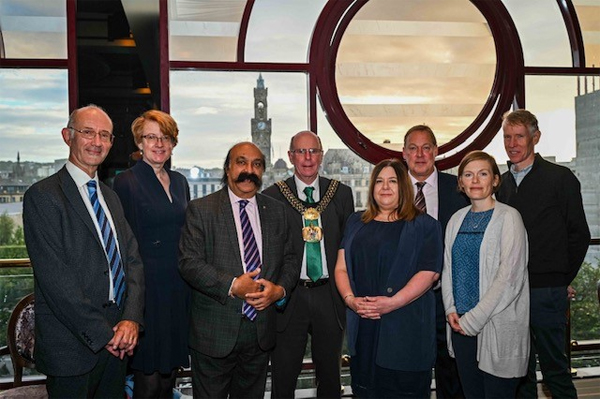Bradford Council has celebrated questionable success in its struggle to demonstrate compliance with the legal limit for toxic air pollution in the Air Quality Directive.
The authority published a graph (below) showing what it said was the average monthly NO2 levels for five ‘automatic’ sites within the CAZ dating back to September 2018.
Under the Air Quality Directive, which came into force in 2010, an annual level above 40 µg/m3 at any site is a breach of the legal limit and local authorities are not entitled to average data from different sites to bring the level below the legal limit.
Nevertheless, the graph issued by Bradford Council (above) included a green line, representing the ‘legal limit’, with the average for the five sites below that line for the majority of the time.
A spokesperson for Bradford Council told Highways that the graph ‘is not intended to provide details on compliance with the air quality directive but to visually demonstrate the downward trend of our 5 accurate monitoring stations which are within the CAZ across the time period’.
However, it is not obvious from the graph that pollution levels in 2023 were lower than for large parts of 2022.
The highway authority issued a press release last week asserting that it had achieved the ‘lowest levels of air pollution ever’ since it introduced a ‘Class C +’ Clean Air Zone (CAZ), which does not charge private cars last September.
The claim appears to be based on a single month, July 2023, with a monthly average of 20 µg/m3, after which the level rose to 25 µg/m3 – the same level it reached in July of last year.
A press statement from the council attributed ‘significant improvements in air quality levels’ to businesses and transport operators using council grants to upgrade their vehicles to prepare for the CAZ.
The council stated that Market Street in the city centre is showing levels of Nitrogen Dioxide NO2 down from 45 in 2021 to 39 in 2022.
It pointed out that this was ‘below the legal limit’ of 40 µg/m3, which is the average annual mean limit.
The council has not disclosed the data from the 5 individual ‘automatic’ monitoring stations.
These sites were almost all compliant with the average legal limits in 2021. According to the council’s 2021/2022 Air Quality Annual Status Report, in 2021 there was one exceedance of the annual average NO2 objective at an automatic site.
The report notes however that there were 10 exceedances of the annual average nitrogen dioxide objective at passive diffusion tube monitoring sites in 2021. Data from these sites is not included in the graph.
Council leader Susan Hinchcliffe said: ‘The number of non-compliant vehicles has fallen due to vehicles upgrades and changes to fleet composition, this improves air quality not just in Bradford but throughout West Yorkshire.’
This appears however to refer only to chargeable vehicles such as taxis, vans and lorries, with cars that do not comply with the same emissions standards allowed into the zone without charge.

Cllr Hinchcliffe (second from left) celebrates the launch of the watered-down CAZ last year
The council told Highways last year that although the legal limit would be met quicker by charging passengers cars, it ‘pushed back on this’.
The authority claimed that providing assistance to convert taxis (a Class C + CAZ) means that it can meet the limit as quickly as if it charged private cars.
However, the law requires authorities to meet the limit in the shortest possible time, which would appear to require both measures to be used in parallel, not as alternatives.